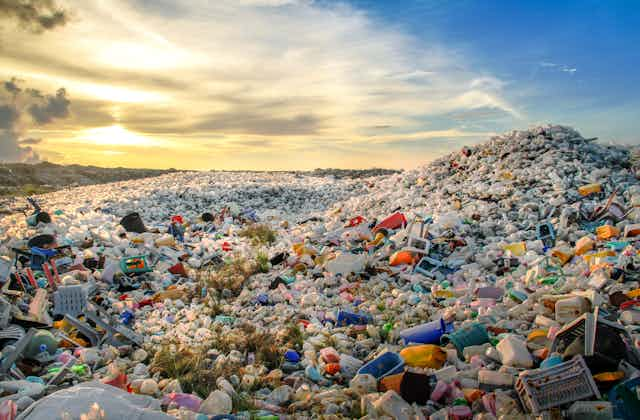The plastic recycling industry is undergoing major changes as demand for recycled content continues to grow. Brands are setting ambitious sustainability targets, which is driving up demand for recycled plastics. However, supply is struggling to keep pace, leading to innovations in collection, sorting and new recycling technologies.

According to Andrew Brown of Wood Mackenzie, “Everyone wants recycled material. It’s a good problem to have.” This demand is being driven by companies throughout the plastics value chain looking to reduce their carbon footprint. Recycling offers an economically viable way to decarbonize.
Recycled PET Demand Growing
Around 25 million tons of polyethylene terephthalate (PET) are used annually in packaging. Recyclate demand is rising, especially in Western nations. The Ellen MacArthur Foundation’s Global Commitment initiative brings together major brands aiming for 26% recycled content in packaging by 2025. This alone requires around 15 million additional tons of rPET annually.
The textiles industry is another major user of PET, accounting for 36 million tons of polyester demand yearly. Brands signed onto Textile Exchange’s recycled polyester commitment are targeting 45% recycled content in textiles by 2025. This represents over 16 million tons of additional rPET demand.
Supply Shortfalls Projected
While 3 million tons of new rPET capacity are expected by 2025, five times more will be needed to meet these targets. Brands can help close the gap by improving collection rates, investing in enhanced sorting technologies, and utilizing chemical recycling. The US in particular lacks a national collection standard, and could boost supply 10-20% by adopting a European-style model (Source 1).
Imports to Help Meet Demand
Imports are likely to help meet burgeoning rPET demand in the US and Europe. Emily Friedman of ICIS notes recycled plastic capacity growth centers on North America, Europe and Asia, but much of Asia’s new capacity will service Western demand. The US is already importing recycled flake and pellets from Latin America, a trend that should accelerate.
Bales of US plastic have been shipped to reclaimers in Asia, Latin America and Europe depending on market dynamics. While high 2021 freight rates disrupted these trade flows, lower rates this year are restarting inter-regional rPET shipments. Europe is also importing recycled plastic from the Middle East and Asia, while exporting more to the US when economics make sense.
Evolving Regulations Globally
Europe is at the forefront of plastics legislation like recycled content mandates, packaging standardization, and single-use plastic bans. These regulations often preview policies enacted in other regions years later. Already five US states mandate minimum recycled content levels, signaling a shift Friedman expects to accelerate.
Producer responsibility laws are also gaining momentum globally. Maine, Oregon, Colorado and California have passed packaging EPR legislation, joining the EU where it is already widespread. Such laws boost recycling by making producers responsible for end-of-life management.
Asian import restrictions continue to roil global recycling markets as well. As countries ban plastic waste imports, reclaimers are forced to seek new supply sources.
Recyclates Behaving as Commodities
In the past, virgin and recycled plastic prices have moved in tandem, but the commoditization of recyclates is eroding this linkage. Kathy Hall of PetroChem Wire says recyclates are behaving more like commodities trading independently of virgin prices. While previously helpful for stability, this shift raises volatility. Hall believes industry standards will be key to ensuring recycled plastics quality as commoditization accelerates.
Ultimately brands have substantial latent demand for recycled plastics. Boosting supply requires systemic change across the value chain. Improved collection, standardized metrics, advanced sorting, chemical recycling, EPR laws and more harmonized regulations can all play a role in meeting ambitious recycled content goals.
Companies like Polystar Plastics are investing in expanded recycling capabilities to help close the supply gap. But long-term investments and policy reforms are still needed to transform recycling capabilities globally. The coming years will prove critical in determining whether brands follow through on their commitments, or leave meaningful plastic sustainability improvements unfulfilled.